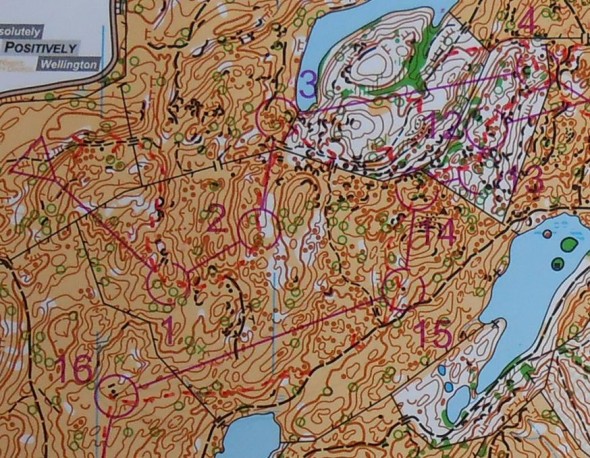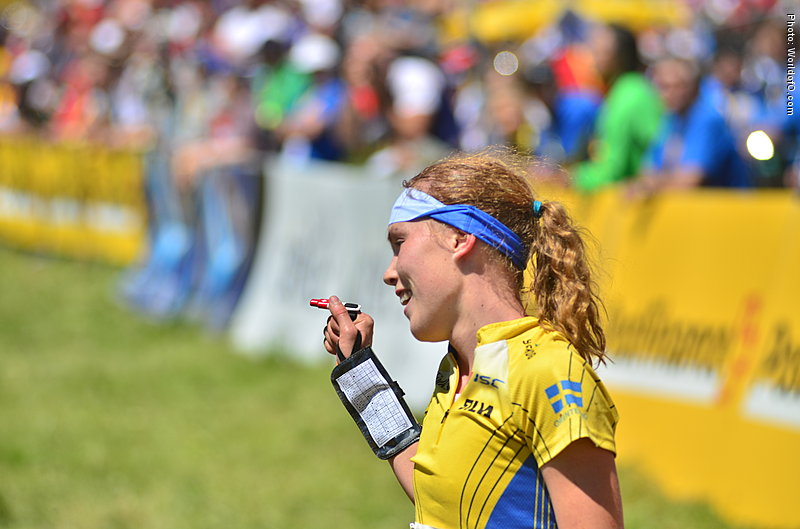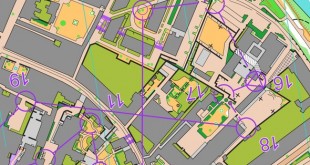
Double for Sweden: Victories for Tove Alexandersson and Jerker Lysell in today’s World Cup chasing start in New Zealand. Alexandersson did it all herself – running alone in the lead from start to finish. Lysell had a different race setup – running with Olav Lundanes for most of the race and passing the Norwegian on the very last part of the course.
The runners met very though conditions – hot weather in open, hilly terrain. The prologue was finished less than 5 hours earlier – so the runners had around 25 minutes full speed running already in their legs. With unforked courses(!) in this open terrain, this was a lot about keeping up high speed!
Sprint finish
I run behind and tried to save as much energy as possible
Peter Öberg (Sweden) started first, but was caught by Lysell, Lundanes and Swiss Hertner after a third of the race.
– Lundanes did the orienteering. I run behind and tried to save as much energy as possible for the sprint finish, Lysell explained his race tactics to orientering.se
Lundanes lost this chasing start in a very similar way to the WOC relay in Switzerland last year. Trying to get away by increasing the speed towards the last control, but being past by another runner – this time Lysell was the faster one.
Peter Öberg (Sweden) finished third – making this a perfect Swedish day.

Lucky Alexandersson: Mistake without consequence
Alexandersson started 38 seconds ahead of Minna Kauppi, Finland, who was back on the start line after not being able to run the first two World Cup races due to illness.
– I started the race well, and orienteered accurately, Alexandersson told orientering.se.
With the good start, the young Swedish runner increased the gap to the others second by second – up to more than 3 minutes – and even had time for some mistakes towards the end of the course without being caught.
– Towards the end I was really tired, and got two mistakes. One mistake where I climbed a big hill which I was not supposed to climb. You don’t want to do that in this heat.
In the end Alexandersson won the race 1:23 ahead of Anne Margrethe Hausken with Minna Kauppi in third (+1:43). Down to Judith Wyder in 10th there was nearly 7 minutes.
– Didn’t enjoy it so much just running in the queue
Not everybody was happy with the chasing start format which was tested in the World Cup in this race. On of them was Daniel Hubmann – the best male orienteer in the World several years in a row – now back after injury last year.
– I was suffering a lot in this tough conditions. Didn’t enjoy it so much just running in the queue, Hubmann explains at his Facebook page.
Question: What do you think about the chasing start format? Is this the future format of orienteering? Please add a comment below.
(see maps and results below the picture)

Tove Alexandersson, winner of the women’s race
Maps
Here you find maps from all the New Zealand World Cup races:
- Map Prologue men, Map Chasing start men, part 1 and Map Chasing start men, part 2 (all maps from Yannick Michiels)
- Map men sprint final part 1 and map part 2
- Map women sprint final part 1 and map part 2
- Map men sprint qualification part 1 and map part 2
- Map women sprint qualification part 1 and map part 2
- Men middle and women middle
 World of O News
World of O News




As a supporter I think the chasing start format would be very exciting to follow by gps tracking and cameras. I agree with Hubmann, running in the queue can be not so fun but for god sake – run faster then! I believe being in the head of the race is much fun.
“Lundanes did the orienteering. I run behind and tried to save as much energy as possible for the sprint finish”.
Really. There is nothing to add here. This sport has a severe lack of self-confidence, trying to get rid of itself and to produce a row of anti-heroes. I am off to the Vendee Globe…
*wink* // ;-)
Kind of depressing… Surely the thing that sets orienteering apart from running is that element of controlling your own destiny through skilful navigation at high speed. Here we have someone who quite openly admits to following to win. I’ve got no problem with Jerker Lysell in this instance, he did what he had to do to win the race. However, isn’t it the responsibility of the sports governing bodies and administrators to put on events that avoid these outcomes? It just doesn’t seem to be in the spirit of the sport to manufacture such inevitable outcomes.
1) Prolog + chase was introduced for a better visibility for medias & specators . With no tv coverage, what is the goal?
2) Without splitting system in such an open terrain, it’s extremely hard to make gaps in a group i guess. That makes less interest for the follower, who isn’t an orienteer
3) There is a gaffling system in the prolog, but not in the chase… Why???
With a good gaffling system, this kind of race can be a good one… But without… i doubt.
A better format would be a mass start with multi-gaffling and a common last few legs.
Chasing Start is okay for World Cup races, assuming they’re all going to be televised! since it’s entertaining for the spectator, but there’s no way they should have this at the World Champs. Like Martin said, including entertainment-O at WOC suggests a sport with a lack of self-confidence.
The first international O-Race, which I watched as a spectator was the world-cup final in 1986 in Switzerland. For the man it was also a chasing start, but the distances were much longer (2x 1h?). I enjoyed it very much, there was a thight fight between Jörgen Mortensson an Urs Flühmann, who won in the end. Of course there was no TV and GPS, only a few intermediate times.
First I have to say congratulation to Jerker Lysell. He did what he had to do and was best in this type of competition.
However, said that, the IOF committee who wanted to test this format in a world cup race never stops to surprise me. Everybody with some experience from orienteering races would understand that a chasing start on a middle distance in this type of open terrain just will be a cross-country race for everybody except the one in the lead.
And then I think; either the IOF committee would like it to be this way, or they are lacking so much experience that they were surprised that it developed like it did. I don’t like neither of the alternatives.
A chasing start might work well, and we have seen it before, but NOT on a middle distance with a lot of controls in a open terrain! You need a course with fewer controls and a lot of different route choices, a splitting system, and a terrain with low visibility.
Then you will get a orienteering competition and not a cross-country race.
6 sprints out of 13 World Cup races in 2013 – Is it orienteering?